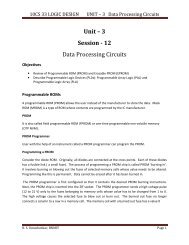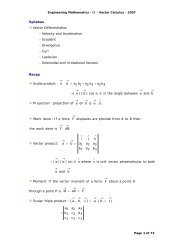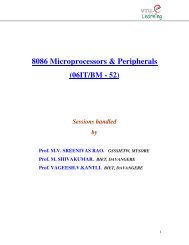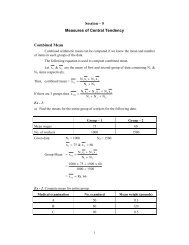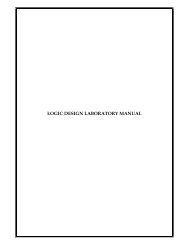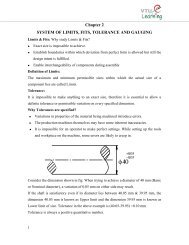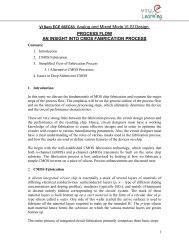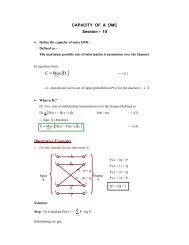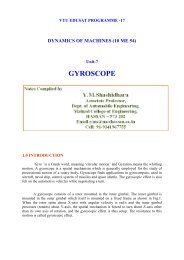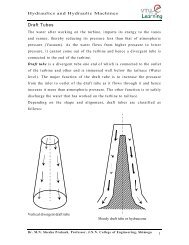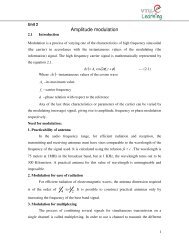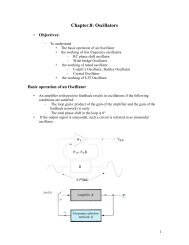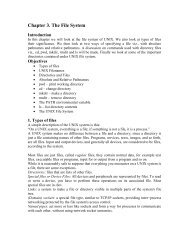1 Code Generation Code generator phase ... - VTU e-Learning
1 Code Generation Code generator phase ... - VTU e-Learning
1 Code Generation Code generator phase ... - VTU e-Learning
Create successful ePaper yourself
Turn your PDF publications into a flip-book with our unique Google optimized e-Paper software.
MOV b, R0 / load b to register Ro,<br />
MUL C, R0<br />
MOV.R0, a Mov a to Ro and moving Ro to a can be eliminated<br />
MOV a, R0<br />
MUL e, R0<br />
MOV R0, d<br />
Redundant instruction should be eliminated.<br />
Replace n instruction by single instruction<br />
x = x + 1<br />
MOV x, R0<br />
ADD 1, R0 ⇒ INC x<br />
MOV R0. x<br />
Register allocation: If the operands are in register the execution is faster hence the set of<br />
variables whose values are required at a point in the program are to be retained in the<br />
registers.<br />
Familiarities with the target machine and its instruction set are a pre-requisite for designing a<br />
good code <strong>generator</strong>.<br />
Target Machine: Consider a hypothetical byte addressable machine as target machine. It<br />
has n general purpose register R1, R2 ------- Rn. The machine instructions are two address<br />
instructions of the form<br />
op-code source address destination address<br />
Example:<br />
MOV R0, R1<br />
ADD R1, R2<br />
Target Machine supports for the following addressing modes<br />
a. Absolute addressing mode<br />
Example: MOV R0, M where M is the address of memory location of one of the<br />
operands. MOV R0, M moves the contents of register R0 to memory location M.<br />
b. Register addressing mode where both the operands are in register.<br />
Example: ADD R0, R1<br />
c. Immediate addressing mode – The operand value appears in the instruction.<br />
Example: ADD # 1, R0<br />
2



